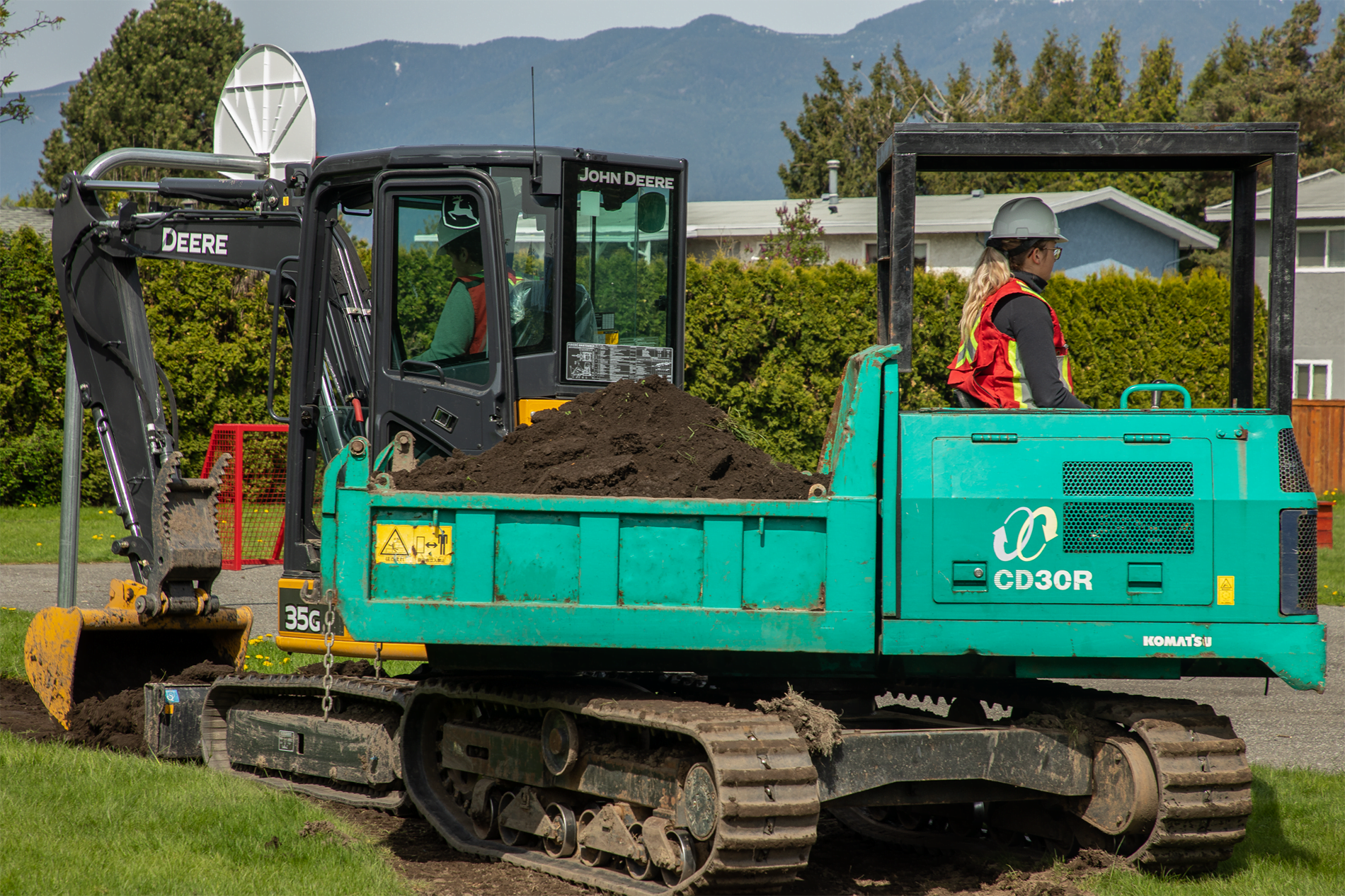Advantages of Tracked Vehicles For Parks and Recreational Spaces
When you look at rural and urban park spaces being constructed or maintained in British Columbia, you may notice that tracked land vehicles are chosen more often to complete large tasks. The compact track loader or excavator maneuvers effortlessly across the grass as they may install playground equipment, fountains, lighting, stoned pathways, or fences in the park area. Yet why do contractors in Vancouver, Langley, Surrey and Victoria choose track vehicles over wheeled vehicles to perform heavy construction work?
Advantages of Tracked Vehicles
To realize the benefits of a tracked vehicle for certain construction and maintenance jobs, you have to understand the basics of the tracked vehicle design. A vehicle may be equipped with rubber tracks or steel tracks as the track shoes come in different options based on the work environment. The track shoes may consist of:
- Low ground pressure shoes: for soft ground conditions where flotation may be a problem.
- Single-grouser shoes: for moderate and extreme service to use for low to high impact work; appropriate when good traction is needed
- Multi-grouser shoes: for enhanced turning capabilities when requiring less ground penetration and disturbance
- Chopper shoes: for environments where there is a lot of debris that will stick to the tracks.
The tracks on the vehicle cover more ground than with tires, which redistributes the entire weight of the vehicle over a greater area. This weight distribution actually reduces the load transfer so that less pressure is applied to the ground at a single point. The machine, in essence, floats on the surface of the ground instead of sinking into it.
Less Pressure to Disturb Park Surfaces
When it comes to grassy and soft surfaces in parks, a tracked vehicle is preferred over a wheeled vehicle of the same weight. Due to the greater weight distribution and the selection of track shoes, the tracked vehicle will be less likely to tear into the ground or create divots and tracks that show where it moved. This feature minimizes the damage to grass as the contractor won’t have to replace the lawn after the construction job is completed. In addition, the tracked vehicle can still move across paved surfaces with little impact, offering versatility along varying surface conditions.
Maneuverability and Stability
A tracked carrier works well on ground that is wet or slippery from rain, snow, dirt and gravel. Its lower profile and greater weight distribution allows the vehicle to have more traction on wet grass, deep snow and even on ice. So it is the perfect machine to use for snow removal in the winter.
Also, tracked vehicles can drive along slopes and angles on uneven ground due to having greater ground contact. When turning, a tracked vehicle moves within its own radius without moving forward or back. This maneuver is accomplished by braking one side of the track while pushing the acceleration on the other side. So the vehicle is less likely to slide on slopes when turning on soft or loose surfaces.
It is true that a track vehicle is slower than a wheeled vehicle when trying to perform fast work. Its top speed can range from 4mph up to 8mph depending on the type of heavy equipment. Yet you can overcome this issue through construction site planning. A tracked machine can maintain its efficiency when being used for tasks where greater mobility in tight spaces is needed. Since a high rate of speed is not required in such situations, the tracked vehicle can be used.
Obtaining Tracked Vehicles from Rent1
When you are looking for tracked vehicles in the British Columbia area, come to Rent1. We offer a wide selection of tracked excavators and compact track loaders that minimize group pressure for your park application. Learn more by contacting our representatives.

